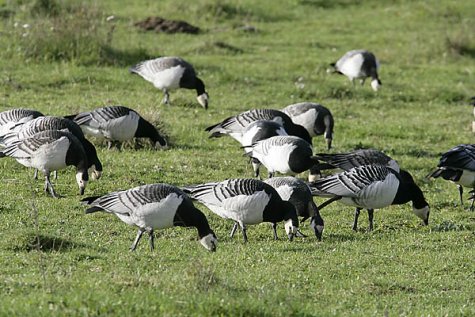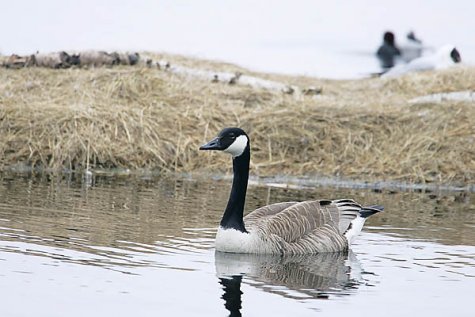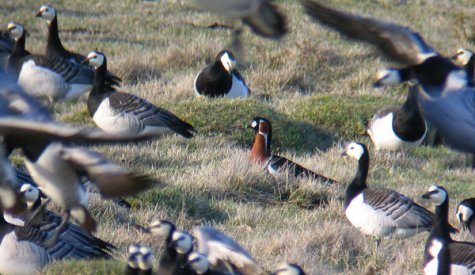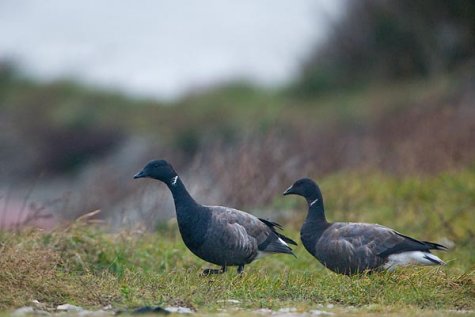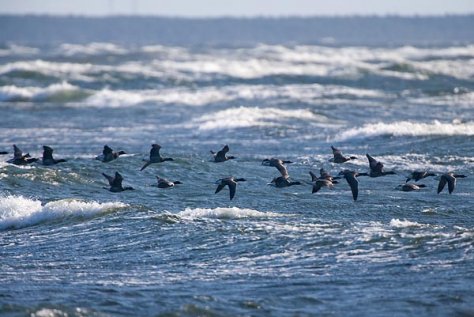Comparing migrants
Photos: Arne Ader
Translation: Liis
| Barnacle goose |
Valgepõsk – lagle
|
Branta leucopsis |
| Canada goose |
Kanada lagle
|
Branta canadensis |
| Brent goose |
Mustlagle
|
Branta bernicla |
The most numerous of all the observed species in Estonia during the international birdwatching days last weekend were – based on preliminary reports – the barnacle geese (25700 birds), bean geese and greater white-fronted geese (together 21600), brent geese (1567) and mallards (1433). So there is reason to compare some related species that occur most often
The barnacle geese passing here in autumn have become steadily more numerous thanks to the long-time hunting prohibition. Flocks of barnacle geese can be seen in fields, hayfields and coastal meadows from the end of September and a smaller number stay here to feed until the snow comes. Farmers are sometimes quite irritated, not unreasonably. Autumn migrants are just short of a hundred thousand; when this year’s numbers have been added up the ornithologists will present a summary.
It is a silver grey and black and white large goose with bars. the upper breast, from shoulder height to the top of its head has glossy black feathering, the forehead and cheeks are white. During migration calls sound like hoarse barking.
The bigger and much less numerous black-headed Canada goose, that can be seen wintering in Estonian waters in small flocks is shown as comparison.
.During later years a few red-breasted geese (Branta ruficollis) have been observed nearly every year together with the barnacle geese. It is certainly noticeable among the feeding birds.
Photo: Aivar Veide
Brent geese
The brent geese have learnt to use the seashore meadows during the last decades. Earlier this species nearly exclusively foraged in the shallow waters in the bays of the coastal sea. Their number is less than a tenth of that of barnacle geese but is increasing.
The impression of brent geese in the sea is one of "black“ birds (their Estonian name, mustlagle, means black goose). Smaller than the barnacle geese but comparable to the Anser geese in size; plumage brownish-grey with dark flecks, only the tip of the tail is white. The belly can be pale or dark, depending on the subspecies. Adult birds have white patches on the sides of the neck, distinguishing them from the young birds that lack the patches.

